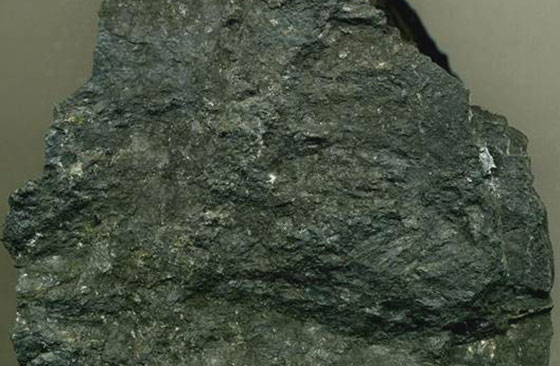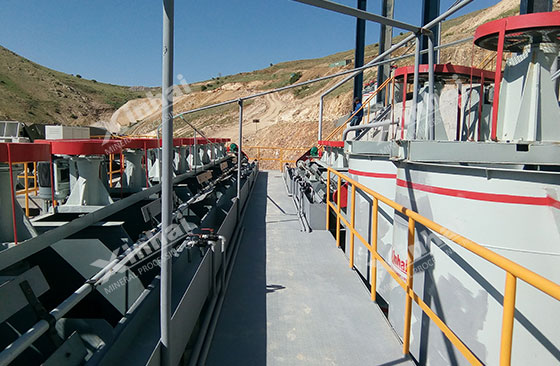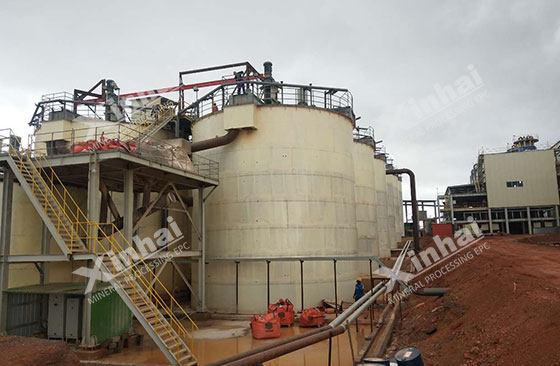
Carlin-type gold deposits are an important type of gold deposits. Their mineralization conditions are usually related to hydrothermal activity. They are formed in a specific tectonic-magmatic environment. These gold deposits are formed at shallow to medium depths (generally less than 5 kilometers) and are closely related to fluid migration and chemical reactions within the crust. In such an environment, hydrothermal fluids rich in metal elements rise to the surface through the fracture system and interact with the surrounding rocks, resulting in the precipitation of gold and other associated elements.

In Carlin-type gold deposits, gold usually exists in fine particles or even nanometers, dispersed in sulfide minerals (especially pyrite) or carbonate minerals. In addition to gold, other minerals include calcite, quartz, and higher levels of arsenic (As), mercury (Hg), antimony (Sb) and other elements.
In view of the complex ore properties of Carlin-type gold deposits and the special occurrence state of the gold they contain, specific technical means are required for effective extraction. The ore dressing process mainly includes pretreatment, flotation concentration, cyanide leaching and subsequent treatment.
For some difficult-to-treat raw ores, pre-oxidation treatment may be required first, such as bio-oxidation, pressure oxidation and other methods to increase the solubility of gold. This step is particularly important for ores containing a large amount of carbonaceous materials or high sulfide content.

Flotation is one of the common primary enrichment technologies for Carlin-type gold mines. By adding collectors and frothers to the pulp, the target minerals are selectively attached to the surface of the bubbles and floated up for separation, thereby achieving effective separation of useful minerals from gangue minerals. For such fine-grained gold ores, optimizing the reagent system and adjusting the grinding fineness are key factors in improving the recovery rate.
The concentrate obtained after flotation will then enter the cyanide leaching stage. This is one of the most commonly used methods for extracting gold from ores. Under certain conditions (such as appropriate pH value and temperature), using sodium cyanide solution as a solvent, gold can be dissolved to form a water-soluble complex [Au(CN)₂]⁻. In order to accelerate the reaction rate and improve the leaching efficiency of gold, oxygen or other catalysts are sometimes added.

Zinc powder replacement: A traditional method for recovering gold from leaching solution, that is, adding zinc powder to a solution containing [Au(CN)₂]⁻ to precipitate gold using its stronger reducing ability.
Activated carbon adsorption: A more popular practice in modern industrial production. Using the strong affinity of activated carbon for [Au(CN)₂]⁻, gold ions in the solution are directly removed during the leaching process through a device equipped with activated carbon columns. The gold adsorbed on the activated carbon is then resolved by heating and other methods.
Electrolytic deposition: In some cases, electrolysis can also be used to directly precipitate pure gold from the solution.
The above is an introduction to the characteristics of Carlin-type gold ore and the mineral processing process. In addition to Carlin-type gold mines, there are also greenstone belt-type gold mines, gold placer mines, volcanic rock-type gold mines, weathering crust-type gold mines, etc. Each gold deposit has different gold content types, so its mineral processing methods are also different. It is recommended to conduct gold selection tests and design suitable gold selection process flow based on test analysis.

In summary, Carlin-type gold deposits, with their unique mineralization characteristics, complex ore properties and special gold occurrence states, have put forward high technical requirements for mineral processing technology. Through scientific and reasonable process design, such as pretreatment, flotation concentration, cyanide leaching and subsequent treatment, the gold recovery rate and resource utilization efficiency can be effectively improved. At the same time, selecting targeted mineral processing technology according to the characteristics of different gold mine types is the key to maximizing economic benefits. In the future, with the continuous advancement of mineral processing technology and the improvement of environmental protection requirements, the development and utilization of Carlin-type gold mines will be more efficient, green and sustainable.
To find out more about our products and solutions, please fill out the form below and one of our experts will get back to you shortly.